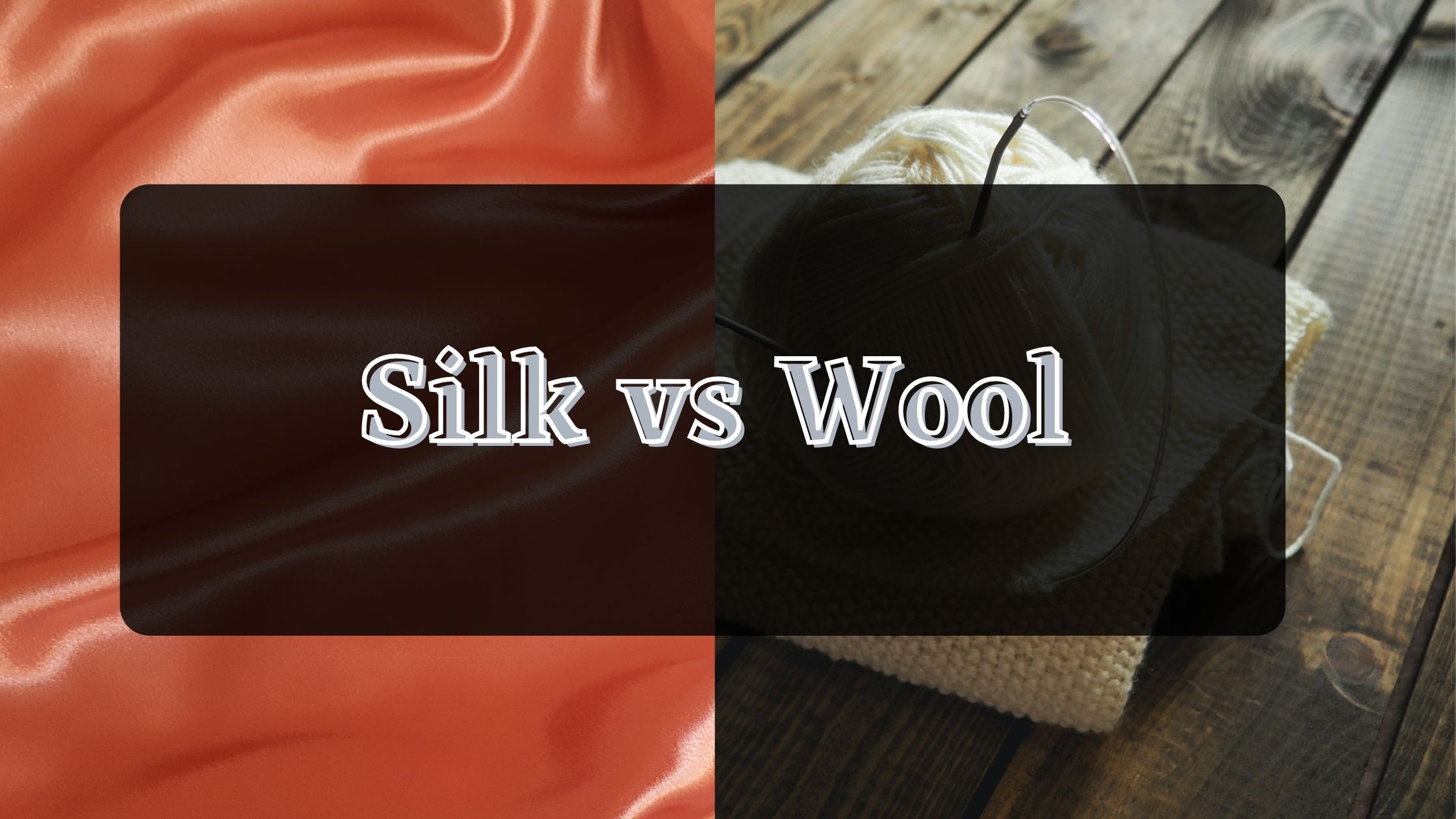Silk vs Wool – 14 Key Differences

Silk and Wool are both fibers are from animal origin. But there is a huge difference between silk vs wool.
Silk: Silk is a protein fiber and only one natural continuous filament made by the silkworm, produced by caterpillars belonging to the genus Bombyx. The most beautiful among all textile fibers is silk, which is claimed as the queen of textiles. It comes from the cocoon of silkworm and requires a great deal of handling and processing, which makes it one of the most expensive fibers also.
Wool: Wool is the natural highly crimped textile fiber obtained from a variety of sheep. Wool is possibly the oldest fiber known to humans. It was the first fibers to be spun into yarn and into the fabric. For thousands of years, wool has been used for clothing and other purposes by different tribes and nations around the world. Wool producing countries are Australia, China, the Former USSR, New Zealand, Uruguay, South Africa, Turkey and Pakistan.
14 Key Differences Between Silk vs Wool
| Character | Silk | Wool |
| Outer surface | Very smooth, regular and fine | Uneven scale |
| Length | 300-2000 meter | 2-8 cm |
| Diameter | 10-20 µm | |
| Polymer | The silk fibron polymer is a linear fibroin polymer | Wool keratin polymer is a helical configuration cross-link polymer |
| Amino acid | Silk polymer is composed of sixteen different amino acids | Wool polymer is consist of 20 different amino acids |
| Di-sulphide bond | Doesn’t contain any di-sulphide bonds | Contains di-sulphide bonds such as cystine |
| Polymer length | Silk polymer is about as long as 140 nm | Shorter than silk polymer |
| Repeating unit | Repeating unit is peptide bond | The repeating unit of wool is peptide bond |
| Chemical bond | Chemical bonding groupings of the silk polymer are hydrogen bonds, the carboxyl and amino groups which give rise to the salt linkages | Chemical bonding grouping of the wool polymer are hydrogen bonds, salt linkages, peptide and disulfide bonds etc |
| Attraction of polymer | The attraction between silk polymer is thought to be hydrogen bonds | The attraction between wool polymers is thought to be hydrogen bonds and van der wall forces. |
| Polymer arrangement | Fibroin polymers must therefore lie closer to-gather than this less than 0.5 nm | Keratin polymer lies in cross-linked a helical pattern |
| Structure | Crystal structure | Amorphous structure |
| Resistant to abrasion | Low | Good |
| Resistant to sunlight | Continuous exposer to light weakens silk faster than cotton or wool | Wool has a good resistance against sunlight |
